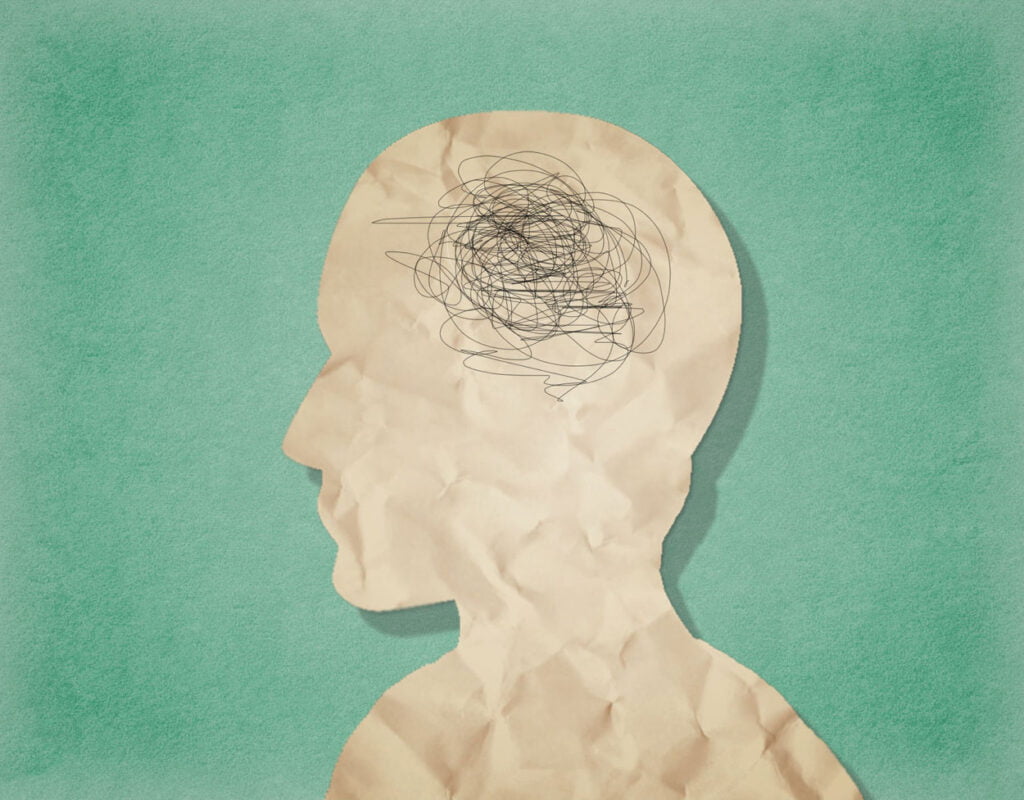Are you tired of those throbbing headaches that seem to strike out of nowhere? Do you find yourself frequently reaching for painkillers to ease the discomfort? If so, you might be experiencing migraines. Migraine is a neurological condition characterized by recurrent and severe headaches, often accompanied by other symptoms such as nausea, sensitivity to light and sound, and visual disturbances.
One of the key features of migraines is their unpredictability. They can occur suddenly and last anywhere from a few hours to several days, disrupting your daily routine and affecting your overall quality of life. But what causes migraines? While the exact cause is still not fully understood, researchers believe that a combination of genetic and environmental factors play a role.
Imagine your brain as a complex network of electrical connections. In a person with migraines, certain triggers can set off an abnormal cascade of events in this network, leading to the onset of a headache. These triggers vary from person to person and can include stress, hormonal changes, certain foods and drinks (such as chocolate, cheese, and alcohol), lack of sleep, and even changes in the weather.
When a migraine attack strikes, it can be debilitating. The pain is often described as pulsating or throbbing, usually on one side of the head. Alongside the pain, you may experience other symptoms like dizziness, fatigue, difficulty concentrating, and even mood changes. The intensity and duration of these symptoms can vary from person to person and from one episode to another.
Managing migraines involves a combination of lifestyle modifications and medications. Identifying and avoiding triggers is an essential step in preventing attacks. This can be achieved through keeping a migraine diary to track potential triggers and patterns. Additionally, stress management techniques, regular exercise, and maintaining a consistent sleep schedule can help reduce the frequency and severity of migraines.
In some cases, over-the-counter pain relief medications may provide relief during an attack. For more severe or frequent migraines, prescription medications such as triptans or preventive drugs may be recommended by a healthcare professional.
While migraines can be challenging to live with, understanding the condition and taking proactive steps towards managing it can make a significant difference. With the right approach, you can regain control over your life and minimize the impact that migraines have on your daily activities. So, if you’ve been struggling with recurrent headaches, it’s important to consult with a healthcare provider who can provide a comprehensive evaluation and guide you towards effective treatment strategies.
Table of Contents
Unraveling the Mystery: New Study Offers Groundbreaking Insights into Migraine Causes
Have you ever wondered what triggers those debilitating migraines that leave you clutching your head in pain? Well, a groundbreaking new study may have finally shed some light on this mysterious condition. Researchers from leading medical institutions around the world have collaborated to uncover the underlying causes of migraines, and their findings are truly astonishing.
In the past, migraines were often misunderstood and dismissed as mere headaches. However, this new study reveals that migraines are far more complex than previously thought. It turns out that a combination of genetic and environmental factors play a significant role in triggering these intense episodes of pain.
One of the key discoveries from this study is the involvement of certain genes in migraine susceptibility. Researchers have identified specific genetic variations that increase an individual’s likelihood of developing migraines. These genes are responsible for regulating how our brains process pain signals, making some people more susceptible to migraines than others. This breakthrough opens up exciting possibilities for targeted treatments tailored to individuals based on their genetic makeup.
In addition to genetics, the study also highlights the impact of environmental factors on migraines. Stress, sleep disturbances, hormonal changes, and dietary triggers have long been associated with migraines, but the precise mechanisms were unclear. The researchers found that these factors can disrupt the delicate balance of chemicals in the brain, leading to a cascade of events that culminate in a migraine attack.
Understanding the intricate interplay between genes and the environment is crucial for developing effective treatments. Armed with this newfound knowledge, scientists hope to develop personalized therapies that address the root causes of migraines rather than merely alleviating symptoms. This represents a paradigm shift in migraine management and offers hope to the millions of people worldwide who suffer from this debilitating condition.
While further research is needed to fully unravel the complexities of migraines, this study marks a significant milestone in our understanding of the condition. By unlocking the secrets behind migraine causes, researchers have paved the way for innovative treatments that could revolutionize the lives of migraine sufferers.
this groundbreaking study has finally unraveled some of the mysteries surrounding migraines. It reveals the intricate interplay between genetics and environmental factors and provides a solid foundation for future research and treatment development. With continued efforts in this field, we can look forward to a future where migraines are better understood and effectively managed, bringing much-needed relief to those who endure their debilitating effects.
Beyond the Pain: The Hidden Impact of Migraine on Daily Life Revealed
Migraine, a condition that extends beyond mere pain, can have a hidden impact on daily life that is often underestimated. This article aims to shed light on the profound effects of migraines and how they can disrupt various aspects of one’s day-to-day existence.
Imagine waking up with a throbbing headache, accompanied by nausea and sensitivity to light and sound. Simple tasks like getting ready for work or school suddenly become daunting challenges. The excruciating pain demands attention, forcing individuals to put their plans on hold and retreat to a quiet, dark room. Migraines can strike without warning, leaving people feeling helpless and frustrated.
The impact of migraines extends far beyond physical discomfort. They can impair cognitive function, affecting memory, concentration, and overall mental clarity. Imagine trying to focus on an important project or engage in a meaningful conversation while your head feels like it’s trapped in a vice. It’s like trying to swim against a strong current; every effort feels twice as difficult.
Moreover, migraines can take a toll on emotional well-being. Chronic pain and the constant fear of the next attack can lead to feelings of anxiety, depression, and social isolation. Everyday activities that others may take for granted, such as going out with friends or attending social gatherings, suddenly become challenging or impossible. Migraines can cause people to withdraw from their usual social circles, leading to a sense of loneliness and disconnection.
The ripple effect of migraines also impacts professional and academic lives. Frequent absences due to debilitating headaches can result in missed opportunities, stalled career growth, and strained relationships with colleagues and supervisors. Students may struggle to keep up with coursework, jeopardizing their academic performance and future prospects. Migraines can feel like roadblocks standing in the way of personal and professional success.
migraines are not just headaches—they are complex conditions that permeate various aspects of daily life. They disrupt physical, cognitive, and emotional well-being, distorting routines and limiting opportunities. Understanding the hidden impact of migraines is crucial for providing support, empathy, and effective treatment options to those who experience them. It’s time to acknowledge the true magnitude of migraines and work towards a world where their impact is minimized, allowing individuals to live their lives to the fullest.
Breakthrough or Bust? Promising Migraine Treatments on the Horizon
Are you tired of the debilitating pain and disruption caused by migraines? If so, you’re not alone. Migraines affect millions of people worldwide, making it a significant public health concern. The good news is that there are promising new treatments on the horizon that could bring much-needed relief to migraine sufferers.
One potential breakthrough in migraine treatment lies in the field of CGRP inhibitors. CGRP, or calcitonin gene-related peptide, is a molecule in the body that plays a role in causing migraines. Researchers have developed medications that target CGRP and block its actions, effectively preventing migraines from occurring.
These CGRP inhibitors work by suppressing the release of CGRP and reducing inflammation around the blood vessels in the brain. By doing so, they can help prevent the onset of migraines and reduce their severity and frequency. Some clinical trials have shown impressive results, with a significant number of patients experiencing a reduction in migraine days per month.
Another exciting development in migraine treatment is the use of transcranial magnetic stimulation (TMS). TMS is a non-invasive procedure that uses magnetic fields to stimulate nerve cells in the brain. It has been found to be effective in treating depression, and now researchers are exploring its potential for migraine relief.
The idea behind TMS for migraines is that by stimulating certain areas of the brain involved in migraine pathophysiology, it may help alleviate symptoms and prevent attacks. Early studies have shown promising results, with some patients reporting a decrease in the intensity and frequency of their migraines after undergoing TMS treatment.
Additionally, neuromodulation devices are emerging as a potential game-changer in the field of migraine treatment. These devices, such as external trigeminal nerve stimulation (eTNS) and vagus nerve stimulation (VNS), deliver electrical impulses to nerves involved in migraine pathways.
By modulating the activity of these nerves, these devices aim to disrupt the abnormal brain activity that leads to migraines. While more research is needed to fully understand their efficacy, initial studies have shown promising results, making them a hopeful avenue for migraine relief.
the future of migraine treatment looks promising. CGRP inhibitors, transcranial magnetic stimulation, and neuromodulation devices are all showing great potential in providing much-needed relief to migraine sufferers. As further research is conducted and these treatments become more accessible, breakthroughs in migraine management may be just around the corner. So, don’t lose hope – relief from migraines could be on its way soon.

Migraine Myth Busting: Debunking Common Misconceptions About this Debilitating Condition
Are migraines truly just intense headaches? Let’s dive into the world of migraines and debunk some common misconceptions surrounding this debilitating condition. Migraines are not merely a severe form of ordinary headaches, but rather a complex neurological disorder that affects millions of people worldwide.
One prevailing myth is that migraines are caused by eating certain foods. While it is true that some individuals may have specific triggers, such as chocolate or cheese, these triggers vary greatly from person to person. Migraines are primarily driven by genetic and environmental factors, with triggers serving as potential catalysts rather than direct causes. Understanding individual triggers can be helpful in managing migraines, but they are not the sole explanation for the condition.
Another misconception is that migraines only affect women. Although it is more prevalent among females, migraines can affect anyone, regardless of gender. Men, too, experience the pulsating pain, nausea, and sensitivity to light and sound that accompany migraine attacks. It is important to recognize that migraines do not discriminate based on gender.
Many people believe that migraines are simply “bad headaches” that can be cured with over-the-counter painkillers. However, this notion overlooks the distinct nature of migraines. Unlike regular headaches, migraines often come with additional symptoms, such as aura (visual disturbances), dizziness, and even temporary paralysis. For those afflicted, finding relief requires more targeted treatment approaches, including prescription medications specifically designed to address migraines.
Some individuals argue that migraines are purely psychological and can be overcome through mental willpower alone. This is far from the truth. Migraines have a physiological basis, involving abnormal brain activity and chemical imbalances. While stress and emotional factors can trigger or exacerbate migraines, they are not the root cause. Downplaying the biological underpinnings of migraines can lead to misunderstandings and hinder effective treatment.
it’s essential to dispel the common misconceptions surrounding migraines. They are not solely triggered by food, they affect both men and women, they are not just severe headaches, and they have a physiological basis. By understanding the true nature of migraines, we can provide better support and empathetic care for those dealing with this debilitating condition.
















+ There are no comments
Add yours